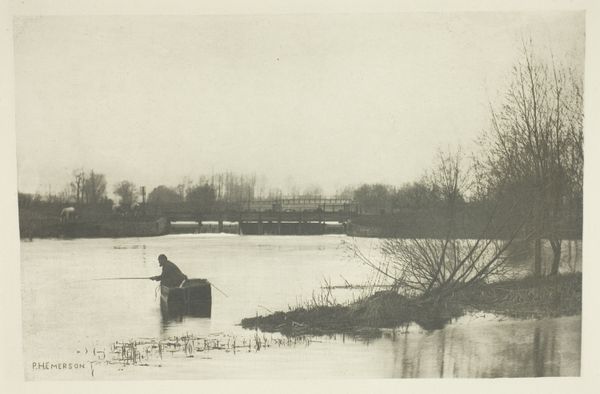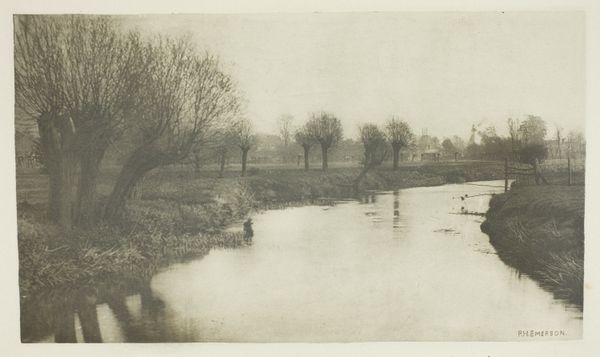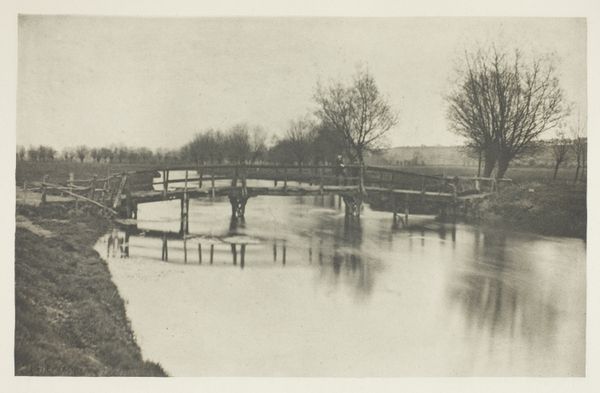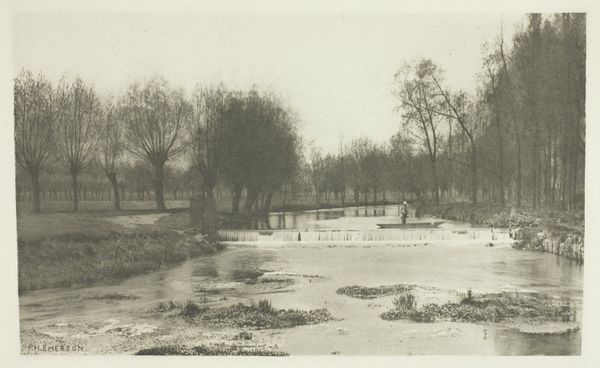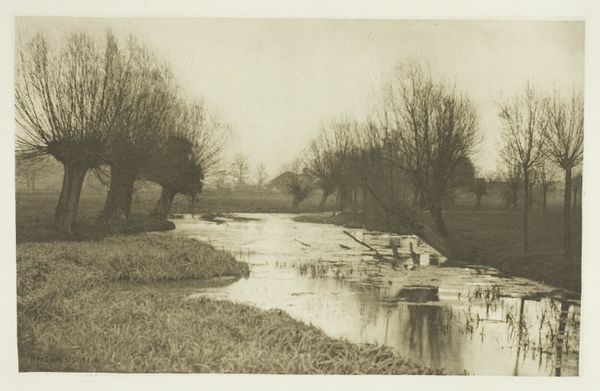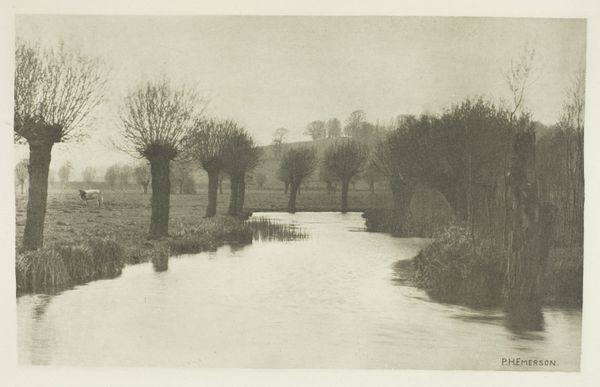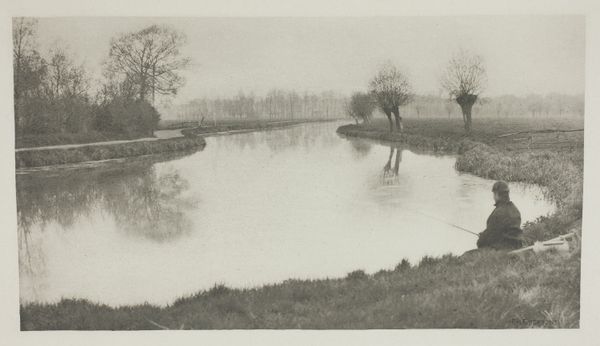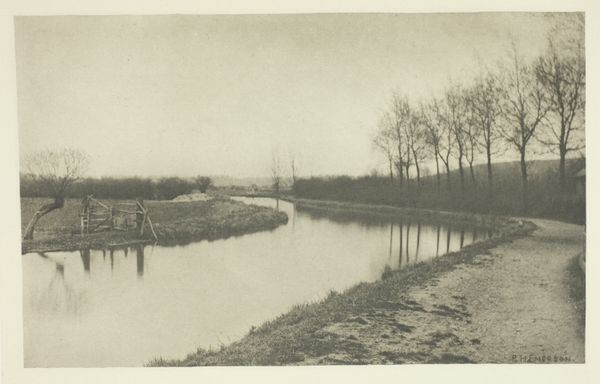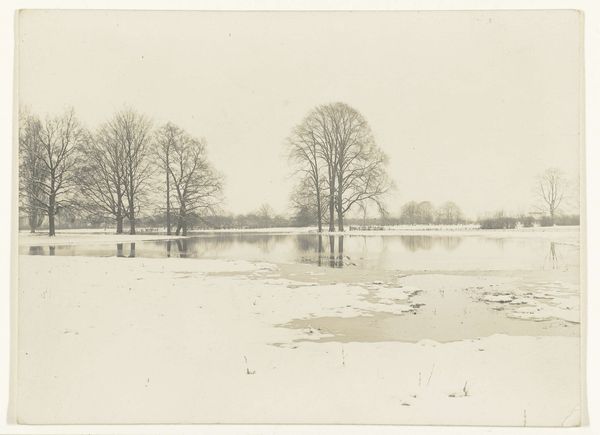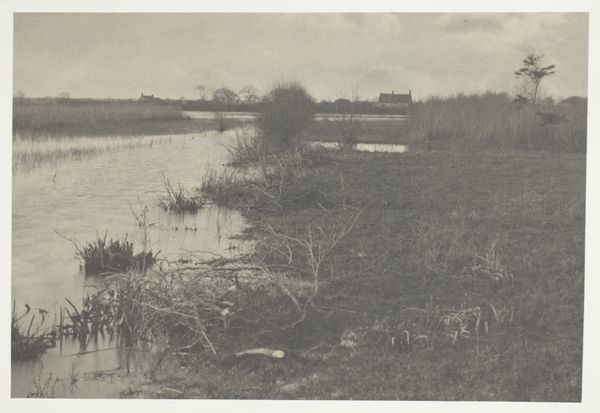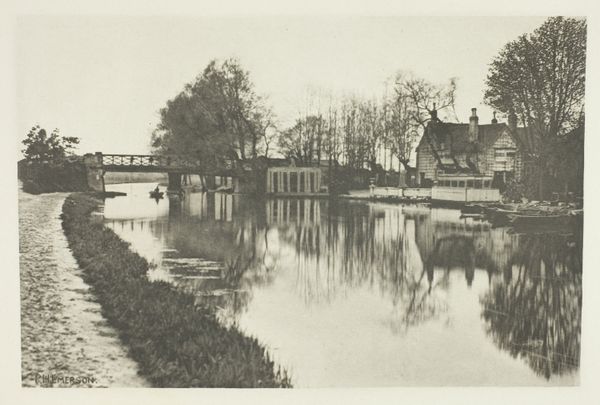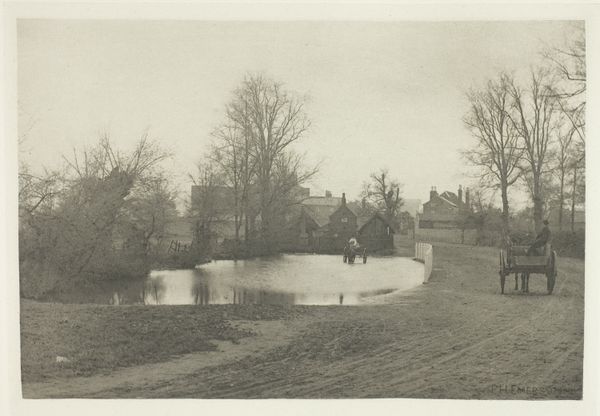
photography
#
16_19th-century
#
pictorialism
#
landscape
#
photography
#
england
Dimensions: 12.8 × 20 cm (image); 15.3 × 22.2 cm (paper); 24.4 × 32.2 cm (album page)
Copyright: Public Domain
Curator: Look at the still reflection in the water; Peter Henry Emerson’s “Mouth of the Old River Stort”, likely captured sometime in the 1880s. The scene is remarkably subdued. Editor: Subdued is an understatement. There's a pervasive stillness here, almost melancholic. The monochromatic palette certainly contributes to this feeling. It evokes a sense of the past, a fading memory of a place. Curator: Emerson championed naturalistic photography, reacting against staged studio portraits. Notice how the composition, the river dominating the foreground, seems to draw us into the landscape of England. Editor: It’s also interesting how Emerson, though advocating for realism, used a soft focus. He's making choices here. How can a person call this photo naturalistic when they had to set everything? And that, the romantic, rural life celebrated by these kinds of images often conveniently ignored the realities of rural poverty and labour at that time. Curator: You are correct, but it may relate to pictorialism's principles in making artistic choices in how images should look and convey feeling and intent like in drawings. We cannot simply brush this aside. Here, this pictorial style adds to that nostalgic feeling. Look how those bare trees mirroring the bareness of the branches, suggesting resilience, maybe a promise of renewal to people. Editor: Or are we romanticizing dormancy and hardship, equating it to "resilience" without interrogating why resilience is needed in the first place? Does that white bridge represent freedom when many couldn't even afford transport? Who had access to places like this for leisure, and who was working the land? Curator: I appreciate your points, that by unpacking images and the context in the artwork, we may reveal hidden meanings, histories and perspectives that need acknowledging. Editor: Precisely. The photograph acts as a trigger for us to remember history in all its nuanced contradictions. Curator: Thinking about how it makes the invisible more visible definitely offers ways to view photographic images in more progressive ways. Editor: Indeed.
Comments
No comments
Be the first to comment and join the conversation on the ultimate creative platform.
